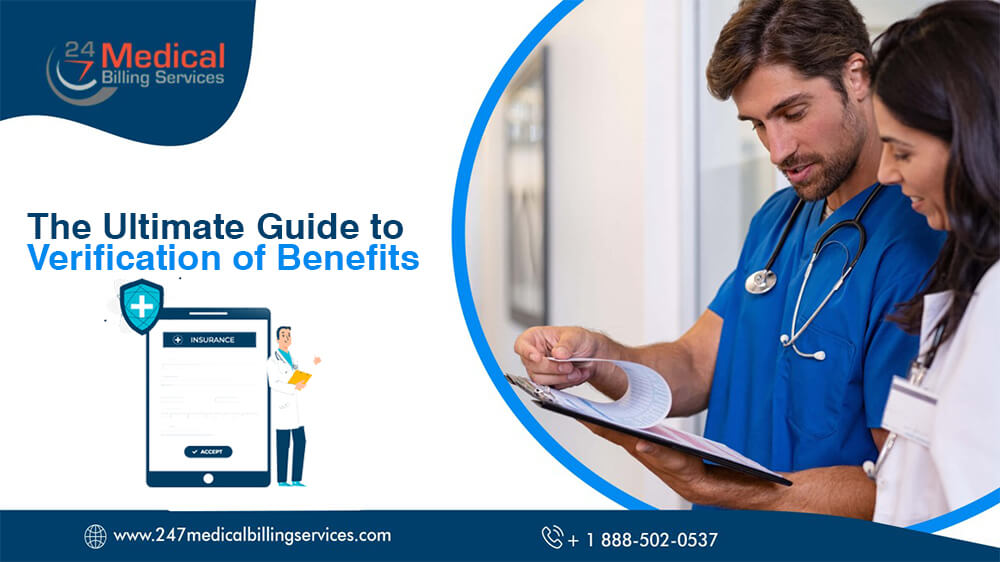
The Ultimate Guide to Verification of Benefits (VOB)
A healthcare practitioner must confirm the patient's coverage for medical treatments and assess their financial responsibility. Physician practices can check the coverage provided by the health plan as well as deductibles, copayments, and co-insurance with the health plan through the patient eligibility and verification of benefits (VOB) procedure.
Eligibility verification encourages gathering coverage status and minimizes the risk of claims being denied. It enables healthcare providers to receive payments from patients in advance, avoiding cash realization delays.
Let’s have a deep dive into the ultimate guide to verification of benefits (VOB):
Importance of Verification of Benefits (VOB)
To Providers:- It encourages higher clean claim rates by ensuring that the correct insurance is billed. It also aids in determining the billing sequence (where a patient has more than one active insurance).
- It enables you to predict how much a patient will owe for treatments, allowing you to collect payment at the time of service.
- It enables obtaining any required authorizations before providing care or services.
- It assists patients in planning for their financial responsibilities, reducing stress or fear over a surprise bill.
- It enables patients to make service plans.
- It allows patients to hunt for a lower-cost provider or a new insurance coverage.
Timelines of VOB
At least 48 hours before the appointment, healthcare providers must check eligibility. If this is not possible, it can be done in real time before the treatment during check-in. Timely checks of eligibility helps in less number of claim denials. Also, eligibility checking electronically is available in majority of EHRs and RCMs. Your healthcare facility will be able to reduce denials and boost revenue realization by validating the patient's coverage before treatment delivery.Challenges of VOB
When determining how to verify insurance coverage and benefits, medical professionals may encounter frequent challenges:- Time-consuming Process:
- Limited Access to Information:
- Complex Insurance Plans:
- Incorrect Information:
- Changes in Coverage:
- Insurance Fraud:
How to Verify Insurance Eligibility and Benefits?
There are two ways healthcare providers can verify insurance eligibility and benefits. These are as follows:- Manual Verification
After that, the insurance representative will confirm the patient's coverage and benefits. This procedure is time-consuming and necessitates repeated efforts to reach the insurance carrier.
- Automated Verification
Automated systems can also provide information about co-pays, deductibles, and any other out-of-pocket expenses for which the patient is liable. This process is faster and more efficient than human verification, and it can assist providers in decreasing administrative burdens.
How can Patients be Informed about the Insurance Verification Process?
Through clear communication with the healthcare professional, patients can be informed about the insurance verification procedure and the required information. Here are some ways for healthcare practitioners to educate patients about the insurance verification process and how to verify insurance eligibility and benefits:- Provide a Patient Information Packet
- Request Insurance Information in Advance
- Verify Insurance Coverage in Real-Time
- Clearly Explain the Process
Best Practices of Verification of Benefits (VOB)
Adopting the best insurance verification and eligibility criteria helps to provide a positive patient experience, decreases administrative load, and reduces claim denials. This can boost patient satisfaction while ensuring physicians are compensated for their services. A few of the best practices are:- Check a patient's insurance coverage before an appointment to check that they are qualified for coverage and that the treatments are covered by their insurance plan.
- Obtain any necessary insurance information from the patient, such as the insurance carrier, plan type, and policy number. This aids in the verification of coverage and the submission of claims.
- Using real-time eligibility verification tools to check a patient's coverage status and any copays or deductibles the patient may be responsible for paying might help healthcare providers reduce administrative load.
Outsourcing to 24/7 Medical Billing Services!
24/7 Medical Billing Services is meant explicitly to assist hospitals, substance abuse treatment facilities, mental health clinics, and individual practitioners. So, the experts and team members know how to help healthcare providers to make more confident treatment decisions. Our objective is to provide patients and providers with quick, easy, and efficient benefits verification so that caregivers may focus on what really matters: better treatment outcomes.See also: Streamlining The Behavioral Health Billing: Best Practices For Success

.png)